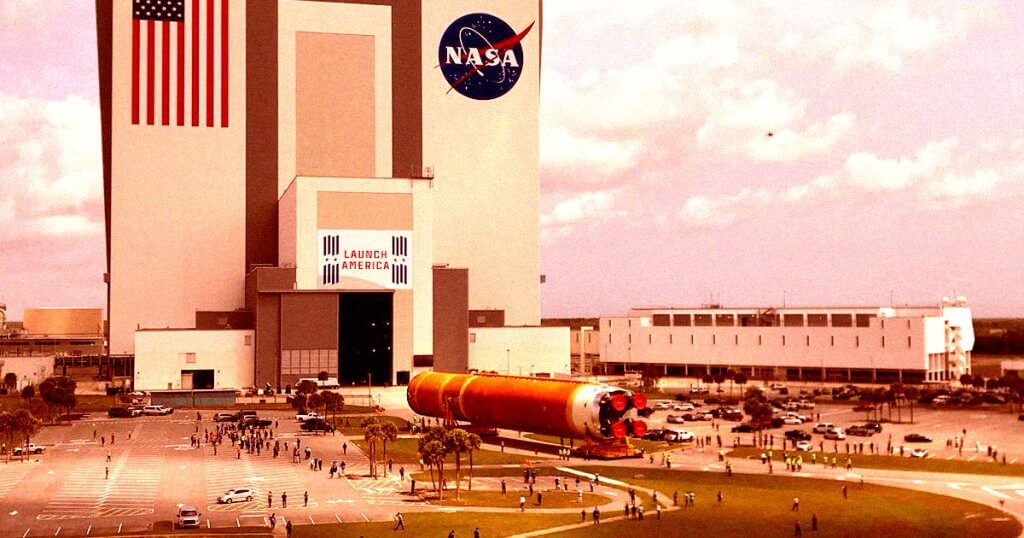
NASA Rocket for First Crewed Moon Mission Since Apollo Arrives at Launch Site (Image Credit: futurism-com)
NASA is “chomping at the bit” to launch it.
Baby Steps
The rocket designed to carry the first humans to the Moon in over half a century has officially made its way to NASA’s Kennedy Space Center (KSC), just over a year ahead of its tentative launch date.
Once fully assembled, it will be rolled out to Launch Pad 39B just over four miles away, where its predecessor launched in November 2022.
“Our team has been chomping at the bit trying to get flight hardware back to KSC,” one of the center’s managers Sean Arrieta said during a live stream, as quoted by Space.com. “When we get in the VAB, we’ll go ahead and set that [core stage] down on some skid beams, where it’ll remain for four to five weeks for some pre-processing, and then we’ll get ready for its next steps in operations.”
It’s an exciting next step in NASA’s efforts to return the first astronauts to the Moon. While next year’s Artemis 2 mission will see a crew of four only fly around the Moon and back, it sets the stage for Artemis 3, the first landing on the Moon in over half a century, which is tentatively scheduled for just over two years from now.
Mooner Than Later
The core stage of NASA’s SLS rocket includes four Space Shuttle-era RS-25 engines. Before launch, it will be joined with two solid rocket boosters, producing a combined 8.8 million pounds of thrust.
NASA’s Orion crew vehicle at the top will house NASA astronaut Victor Glover, who’s slated to become the first Black person to leave Earth’s orbit, commander Reid Wiseman, mission specialist Christina Koch, and Canadian Space Agency astronaut Jeremy Hansen.
NASA has already successfully sent an uncrewed test flight around the Moon and back — the most powerful rocket to make it into orbit at the time — meaning the space agency will have far fewer unknowns to deal with this time around.
However, the agency’s Office of Inspector General is still concerned that unexpected damage to Orion’s heat shield during reentry the last time around still poses a “significant risk” for the upcoming crewed mission.
“The delivery of the SLS core stage for Artemis II to Kennedy Space Center signals a shift from manufacturing to launch readiness as teams continue to make progress on hardware for all major elements for future SLS rockets,” said SLS program manager John Honeycutt in a statement.
“We are motivated by the success of Artemis I and focused on working toward the first crewed flight under Artemis,” he added.
More on Artemis: NASA Astronauts Run Into Cow While Practicing for Lunar Landing





